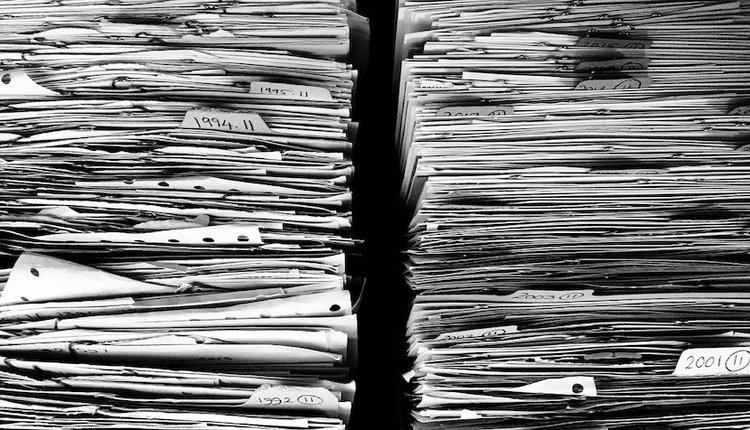
Image by: Sergey Nivens, ©2015 Getty Images
In my past articles, I keep insisting, time and again, the reason that documents should be very well taken care of is that managers are paid to make decisions, which are made based on knowledge, and that knowledge is obtained from processed information (usually a lot of it). At the end of the day, information travels and sits on documents. Hence, if documents are neglected, everything else from there is in jeopardy.
When we talk about managing documents, we are talking about those that are temporary or need to be stored for all sorts of reasons: they need further processing; they are proof of some sort of activity; they must be kept together with other complementing documents to support any sort of project—well, imagination is the limit. Now, what “managing documents” is really about is where the plot thickens:
Storage: Documents need to be stored, both paper-based ones as well as those born digitally. Who does this? What type of documents? Documents may be restricted, classified and secret. Who decides who can store, what documents and using which methodology?
Classification: Someone (or some other automatic application) will have to classify the document. The classification will affect who will be able to see the document and who is involved in its processing. Who decides on who classifies and the classification rules for each type of document? After all, there are many types of documents that have relevant importance to legal, pperations, finance, etc.
Flows: During their processing, documents follow a specific flow, depending on established business rules, which should accommodate for exceptions. Who decides on the flows? Who decides on the exceptions?
Security levels: It is possible that the security level of a document will increase as its processing goes forward. For example, other documents may be attached or it is part of a larger collection of documents, each having their own security clearance. Who decides on all these security clearances?
Life cycle: Different documents may have different life cycles; this sounds quite trivial, but nevertheless, governments do impose policies on retention and destruction of documents. Just doing what the law states may be a complex task in itself. However, if we look beyond the letter of the law, we may find that a document is needed long after the law states it can be destroyed, because that document is part of a larger file that must be kept together. Therefore, we have a legal rep stating that a document may be destroyed, while the chief operational officer screams that the document is necessary further down the road. For all its worth today, it is not possible to rebuild the engineering gem that was the rocket Saturn V, because nobody knows how to do it. Documents were not kept. Who finally decides what is to be destroyed and what is to be kept?
Logging & accountability: A long succession of scandals ended with specific laws, such as Sarbanes-Oxley. Logging what has been done with documents is a must so that accountability policies may be enforced, and, therefore, corporations are more legally protected. Nevertheless, we must ask again who decides on what is to be logged, when to log and how to maintain those records? What if the needs of the organization go further than the strict letter of the law?
We have seen, so far, that there are a lot of people deciding what to do with documents—people from different departments and, most likely, those lacking the "big picture" of the document’s universe. On the other hand, we also approached the issue that a document may be finished in regard to what concerns a particular department, but for a number of reasons, the law being one of them, they should be kept accessible for those who need to know they are there.
This poses a very complex question: Who, at the end of the day, should decide about documents? Scott Draeger, a fellow author, stated in his recent article that Gartner estimates that in the near future, 25% of enterprises will have a chief data officer. This looks nice, but only having the chief will not be enough. There must be a data office eventually reporting directly to the chief executive officer and with members belonging (or at least with strong connections) to all the departments of the organization. These members must have high security clearance, because they will decide generally on the life of information bits and pieces and documents in particular. Once created, the data office will have to start analyzing their own organization and document the present context, the challenges and the menaces. The action of the data office should be absolutely transversal to the company and their decisions concerning documents should be followed by every manager in the organization.
What a revolution that would be, but more and more, there are no isolated documents, just like there are no isolated human beings. We are all part of the whole—so are documents.
Joao Penha-Lopes specializes in document management since 1998. He holds two postgraduate degrees in document management from the University Lusofona (Lisbon) and a PhD from Universidad de Alcala de Henares (Madrid) in 2013, with a thesis studying the economic benefits of electronic document management (EDM). He is an ARMA collaborator for publications and professionally acts as an advisor on critical information flows mostly for private corporations. Follow him on Twitter @JoaoPL1000.
















